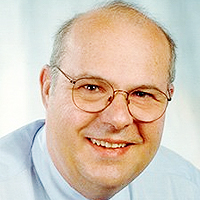Hypertriglyceridemia induced acute pancreatitis in pregnancy: Learning experiences and challenges of a Case report
Published on: 14th May, 2019
OCLC Number/Unique Identifier: 8163913407
Hyperglyceridemia induced pancreatitis in pregnancy accounts for 4% of all cases of acute pancreatitis. Though rare, hypertriglyceridemia induced pancreatitis may lead to fatal maternal and fetal complications, even maternal death. Its management during pregnancy remains a challenge for many physicians. Management options are limited in pregnancy. In the refractory cases, management options and timing of delivery is debatable. Here we report a case of hyperglyceridemia induced pancreatitis and the challenges faced in the management.
Anatomical changes of the development of red Sokoto goat stomach
Published on: 3rd March, 2020
OCLC Number/Unique Identifier: 8875587753
This study is aimed at investigating the age related changes in postnatal development of red Sokoto goat stomach. In this study, a total of ten red Sokoto goat digestive tract samples were used and they were grouped into five (5) age categories (group A to E). The goat ages were estimated using dentition eruption and wearing. The stomach was identified and separated from the other part of digestive tract. The gross study revealed that the stomach was composed of four (4) segments that named; rumen, reticulum, omasum and abomasum with anatomical demarcations between them. The biometric study of weight, length, width, thickness, and volume was found to be increasing with advancement in postnatal ages with the following valves shows the mean value of weight, length, width, thickness and volume were to be 29 to 58.0 (g), 23.5, to 52.1 (cm), 15.4 to 29.0 (cm), 0.48 to 1.0 (mm) and102 to 432 (cm3) from group A to group E respectively. Based on the above findings it was suggested that more research should be conducted using histological techniques and electron microscopy in order to finalize on the findings.
Achilles Tendon Injuries: Comparison of Different Conservative and Surgical Treatment and Rehabilitation
Published on: 21st February, 2017
OCLC Number/Unique Identifier: 7286357861
Despite its high incidence and the great development of literature, there is still controversy about the optimal management of Achilles tendon rupture. The several techniques proposed to treat acute ruptures can essentially be classified into: conservative management (cast immobilization or functional bracing), open repair, minimally invasive technique and percutaneous repair with or without augmentation. Although chronic ruptures represent a different chapter, the ideal treatment seems to be surgical too (debridement, local tissue transfer, augmentation and synthetic grafts). In this paper we reviewed the literature on acute injuries.
Giant cellular angiofibroma of the vulva: case report
Published on: 9th May, 2019
Cellular Angiofibroma is a rare benign mesenchymal tumor without gender preference. It is usually a small (<3cm), well-circumscribed, mostly asymptomatic and typically slow growing. Surgical removal of the mass with its capsule is the preferred treatment, not only helps guarantee complete excision and prevent its recurrence but also minimize blood loss. We present the case of a 76-year-old woman with a giant vulvar mass.
Synthesis, Radioiodination and Biological distribution of 5-(5-(tributylstannyl) benzofuran-2-yl) pyridin-2-amine as an amyloid imaging agent
Published on: 26th December, 2017
OCLC Number/Unique Identifier: 7317576309
In this work an efficient method developed for the synthesis of 125I-benzofuran-2-yl) pyridin-2-amine (125IBPA), followed by radioiodination with 125I by using Chloramine-T at pH 8. The reaction proceeds within 10 min at room temperature (20-25°C). The radiochemical yield determined by Thin-Layer Chromatography (TLC) using hexane:ethyl acetate (1:6 v/v) and the purity analyzed by high-performance liquid chromatography using a reversed-phase RP18column and acetonitrile:0.1 M ammonium bicarbonate (pH 7.5) (1:1) as the mobile phase at a flow rate of 1 ml×min−1. The radiochemical yield using aH2O2 oxidant found equal to 96.5% with a radiochemical purity of 125I-BPA of over 96.5%. The biodistribution data in normal mice indicated a high initial uptake of 6.54±0.10 (% ID/g±SD) in the brain within 30 min post-injection. These results promote a further the use of 125I-BPA as a novel agent for brain imaging.
Common reproductive problem associated with one humped camel (Camelus dromedarius) in West Africa
Published on: 3rd March, 2020
OCLC Number/Unique Identifier: 8875582446
The problems of reproduction in the camel are not extensively investigated as in the bovine, caprine and ovine species. There is need to elucidate the problem in detailed in order to overcome the problem of production and genetic multiplication. The information collected on these problems is derived mainly from questioning the camel owners, slaughterhouse material and very limited clinical and farm observations.
Managing epileptic women in pregnancy
Published on: 2nd April, 2019
OCLC Number/Unique Identifier: 8056332969
Epilepsy is commonly seen in women of reproductive age and it is affecting their reproductive and pregnancy outcomes in an adverse manner [1]. It has seen that there are increased numbers of maternal deaths of pregnant women with epilepsy than those who have no any epilepsy symptoms or episodes. In many studies the common outcome observed is spontaneous miscarriage, ante partum hemorrhage or early pre term deliveries. Malformation and congenital anomalies are quite common in new born of epileptic women and also those who are on some kind of anti-epileptic medicines like valproate sodium. Death or still birth of new born babies is another complication witnessed because of epilepsy in pregnant women [2].
Metallic Ureteric Stents a cost-effective alternative in the management of Obstructed Distal Ureters
Published on: 4th May, 2017
OCLC Number/Unique Identifier: 7286423904
Management of obstruction of the distal-pelvic ureters by minimally invasive procedures such as antigrade or retrograde double “J” stents has generally been unsatisfactory. Corrective surgical procedures mandate long hospitalization, hence high cost, and have a moderate incidence of complications.
Nebulization as complementary therapy for dogs with respiratory tract infections
Published on: 4th October, 2019
OCLC Number/Unique Identifier: 8299739396
Respiratory tract infections in dogs pose a significant problem and often require prolonged treatment. The effectiveness of pharmacological therapy can be improved through the administration of nebulized compounds to liquidize mucus and promote its evacuation from the respiratory tract. The aim of this study was to evaluate the effectiveness of nebulized 0.9% NaCl in dogs with respiratory tract infections. Respiratory functions were assessed based on the results of arterial blood gas analyses, and the patients’ clinical status was determined by evaluating the severity of symptoms on a point grading scale. Inhalation of nebulized 0.9% NaCl significantly accelerated improvement in the patents’ clinical status (normalization of body temperature, decreased cough frequency, decrease/elimination of nasal and ocular discharge, improved appetite) and improved pulmonary gas exchange by reducing partial pressure and total content of carbon dioxide and increasing partial pressure and total content of oxygen in blood.
Immediate postplacental insertion of intrauterine contraceptive device (copper 375) and its complications in term of expulsion, infection and perforation
Published on: 27th December, 2018
OCLC Number/Unique Identifier: 7964701690
Objective: To determine the complications (infection, perforation and expulsion rate) of immediate postplacental insertion of intrauterine contraceptive device (Multiload Copper375) in postnatal patients.
Methods: A case series study was conducted between October 28, 2014 to April 30, 2018 in obstetrics and gynaecology department, Civil Hospital Karachi,-+ Informed consent was taken. Intrauterine contraceptive device (Multiload) was inserted immediately within 10 min after delivery of placenta. These women were observed to determine outcome (infection, perforation and expulsion) at the time of discharge and 6 weeks postpartum. Absence of all these were taken as satisfactory outcome.
Results: A total of 435 women were included in this study. 165 (38%) were delivered through cesarean section and 270 (62%) were delivered through vaginally. There were 36 (8.3%) cases of infection. The cumulative rate of expulsion and perforation at the end of sixth week of post insertion was 39 (9%) and 0% respectively and 360 (82.8%) had satisfactory outcome. Post-placental placements during cesarean delivery are associated with lower expulsion rates than post-placental vaginal insertions without increasing rates of postoperative complications like perforation, slightly increase infection rate following vaginal delivery.
Conclusions: Immediate postpartum insertion of IUCD is an effective, safe and easily reversible method of contraception. Rates of the complications (Infection, expulsion and perforation) are remarkably low.




